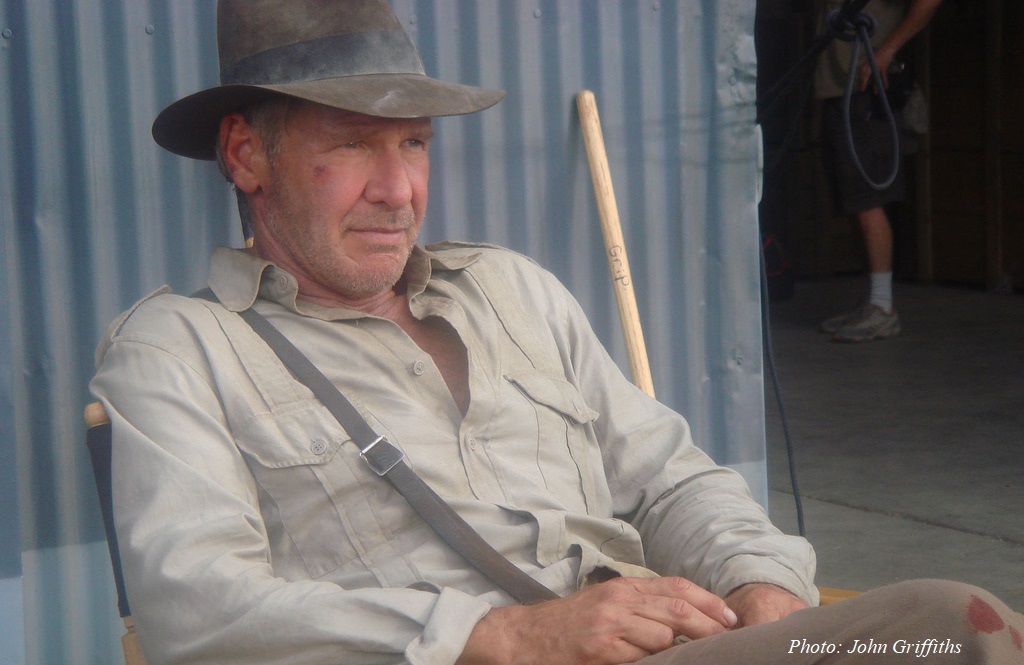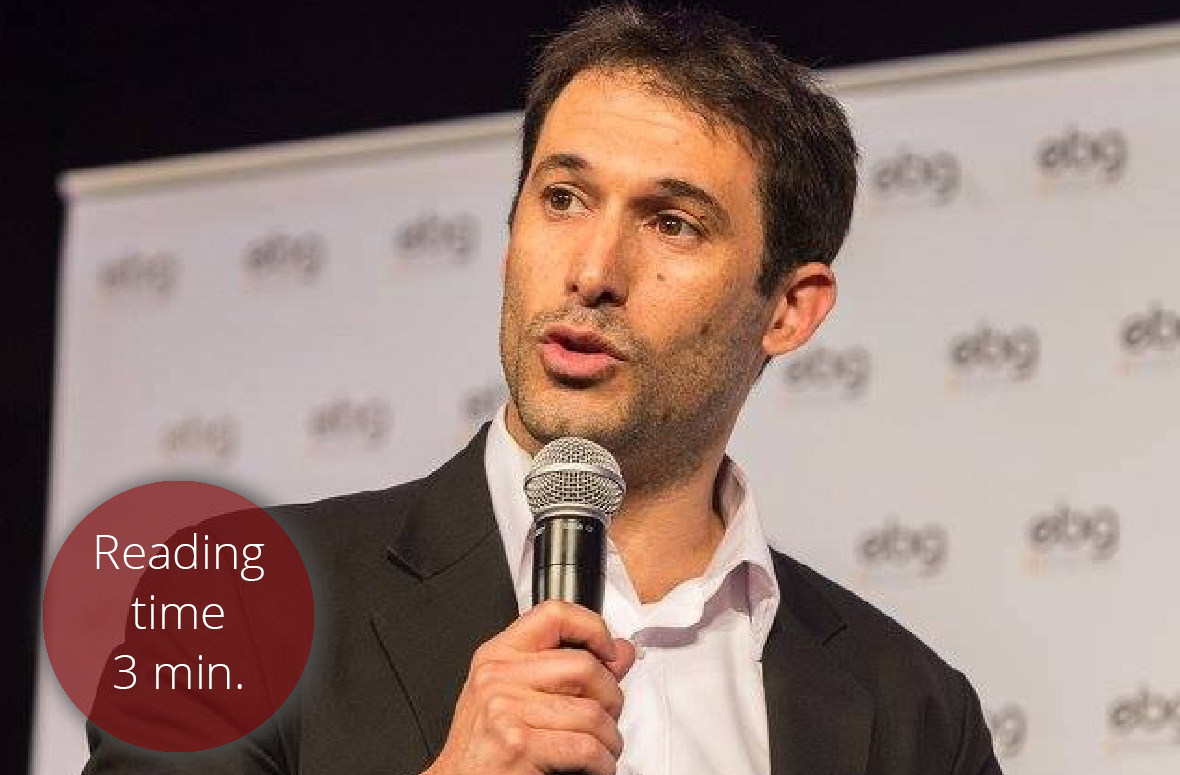How to Choose a UX Designer
13.08.2018

'A UX designer is like a good tourist guide. He will accompany you throughout all the development phases and help you cross areas of uncertainty. Choosing the right UX designer will accelerate your execution and increase your product's usability'
A UX Designer accompanies you throughout all stages of the development process. The right choice of a UX Designer can accelerate performance and increase the usefulness of your application. A less successful choice might ruin the venture. You need to know how to pick a UX Designer: primarily, making sure that the UX Designer understands the connection between the user interface and the actual end users. It is beneficial to understand the costs involved in the work of a UX Designer and new work methods that can save you significant sums of money. This article provides the necessary tools for doing just that.
Why UX? At what Stage do You Need to Choose a UX Designer?
OK, so you have a really great idea for an application or an innovative product and are eager to get started. You know that user experience and user interface design can have a critical impact on your chances of success. Now you're looking for someone to help you characterize and design your application. This person – which I'll call a "UX Designer" in this post – will help you understand for whom this application is intended and will sketch the application's screens such that it will be easy and comfortable to use. Once you have these sketches of the application's screens, you can proceed to the graphic design and programming of the application. Therefore, it is important that you choose a UX Designer before hiring programmers and graphic designers for the development of the application.
What to Ask a UX Designer? How to Review the Work of a UX Designer? Which Questions are Less Relevant to Ask?
You've received a few recommendations from friends and you scheduled a meeting in a café with a UX Designer. After settling in and ordering something to drink, it's time for the interview. A few recommendations: briefly present yourself, give him (or her) the opportunity to tell you about themselves, and ask them to show you a past project of theirs.
Remember, this is a critical point: how does he start describing the project? Does he explain the background of the project or move immediately on to presenting the application? The foundation of a good user interface is a good understanding of who the user is. Therefore, it is important to see if the UX Designer defined for himself (and described to you) for whom the application or project is intended. If there is a description of the target audience or various target audiences, was it clear, understandable, and distinct ("a 30-40 year old woman, immediately following having her first child, with a college degree, works full time, average to average-plus income, lives in an urban environment") or general and amorphous? An additional thing which is important to hear is how the user identity was formulated. Did the UX Designer receive information from customers, did he research the market, did he interview users and watch them himself? Additionally, does the interviewee know how to define what are, in his opinion, the main usage scenarios?
If the interviewee skipped users' descriptions and/or the usage scenarios, this is the stage to request such details with courtesy and determination. If the responses you get are partial and vague – it's problematic. If he refuses (and asks "why should this be of interest to you?") – it's very problematic. As Assi Cohen said: "פה חשדתי!" ("that's when I became suspicious!")…
The common mistake is to open the app or website and check whether the screens look "good for you". What's the problem? In order to know if the app is useful and comfortable, you need to know for whom it's intended. From my experience, many entrepreneurs fail at this point. From the moment they were exposed to the app's screens they're sucked in to examining the graphic design and forget to figure out who are the users and what are the usage scenarios.
After you have received the background regarding the main users and the usage scenarios, it's time to review the app. Now you need to see whether the app is indeed useful and comfortable for the target audience, with respect to their main usage habits. Is it comfortable and reasonable to move from one screen to the other? Is the graphic design appropriate for the target audience?
This is the time to ask whether something looks unclear to you, or does not make sense. It's important to see how the interviewee responds to questions and criticism.
A UX Designer with Experience Relevant for my Startup
And how about a UX Designer that gained experience in other fields? Or how about UX Designers with no professional experience that have just finished their training?
The odds of you finding someone with exactly the relevant experience for your startup are slim. Even if you find someone like that, there is a reasonable chance that he worked for your competitors up until recently. There's also a reasonable chance that he's not loyal to his former employers. This means – "that's when I became suspicious 2!"…
We are all exposed for the first time to certain fields at some point in time. Therefore the right question is how the interviewee succeeds in entering a new field, studying it and producing successful products. The critical review of the project he previously completed will assist with understanding the learning and execution abilities of the interviewee.
And what about inexperienced interviewees, who present their final project from school? In my opinion, this does not disqualify them, as long as they come with learning capabilities and high motivation. They will probably come at a cheaper cost. Take into account that they are learning at your expense ("shaving on your beard", as the saying goes), therefore you will have to monitor their work closely. It might be worthwhile to bring a quality inspector at crucial points in time, but more on this later.
Certificate – Certificate on the Wall, Who's the Best UX Designer of Them All?
Should you take a UX Designer who has completed a degree locally or abroad, from Shenkar, Bezalel or training programs?
This is an issue that has been exhaustively debated in the inner circles. From my experience, I can testify that an academic degree from an institution in Israel or abroad does not necessarily guarantee quality. You need to be aware that training programs in graphic design (Bezalel, Shenkar, etc.) pay less attention to analyzing users or interface characterization. On the other hand, the absence of a certificate also won't guarantee amazing products.
Two for the Price of One

A graphic designer who is also a UX Designer? A programmer who is also a UX Designer? A UX Designer – Graphic Designer - Programmer?
A common question that arises is whether to take a graphic designer who will also handle the UX. On the surface, there are only advantages in such a move: there is no need to employ two suppliers, and reduce coordination and costs. Also, the supply of graphic designers "who also do UX" is quite large. In practice, this is a point that may prove problematic and involve quite a few risks. Graphic design works through emotional-experiential and aesthetic sides in our brain. Analyzing users and their tasks requires analytical capabilities, which are very different from the capabilities required for graphic design. The combination of the two capabilities is quite rare. Usually the dominant capability of graphic designers is to provide visual design. Keep in mind that this may come at the expense of their UX capabilities (which means that you may end up with an application that looks great but not a useful one...).
Another potential option is to take a programmer to perform the UX design. Here too, it seems that you can get two for the price of one. Many programmers are very talented in programming but find it difficult to "get into the mindset" of users, understand and feel the users. Here, too, it is important to ensure that the programmer indeed knows how to research users and see the connection between them and your business needs.
It is very rare to meet a UX Designer – Graphic Designer - Programmer who is also talented in each field.
Should I Handle the UX by Myself?
Chances, risks, and a less familiar alternative (mentorship by a UX Designer).
This is an option that is usually unknown to most people. Some entrepreneurs have basic analysis and UX capabilities. You can take an experienced UX Designer who can accompany you in performing user research, sketch your main screens for you and guide you as you sketch the rest of the screens. This will require you to invest in basic learning of UX and to invest time when actually doing the UX design. On the other hand, you avoid many costs and will better understand how the application works. This knowledge will be used by you later on when graphic designing and programming.
So, How Much Does it Cost?

Rates - a global or hourly payment and all the unpleasant financial things.
Many entrepreneurs ask a simple and obvious question: How much will all of the UX design cost me? They want an exact figure to know if, and for what, the budget will suffice. In practice, it is very difficult to predict the total cost from the start. Many times new requirements with regard to usage scenarios are discovered while analyzing users and configuring the interface. Sometimes competitors are discovered which requires pivoting and finding new solutions. The level of care and the nature of interaction with the customer will also have a significant impact on the time required to fine-tune the UX.
What can be predicted? At the end of each stage, the cost of the next stage can be predicted with a fairly high level of accuracy (for example: at the conclusion of the researching stage you can estimate the scope of constructing the app/site map). In addition to this, you can ask for hourly rates.
Additional information: A study of salary and rates for UX Designers in 2016 from User Experience Israel. http://uxi.org.il/סקר-השכר-והתעריפים-2016.
If you do receive a quote for the entire UX project, take into account that it will be for a very simple version (a Proof of Concept), and changes and modifications will require additional funds.
Personal Chemistry
You are choosing a partner for the long term and for work with the e-n-t-i-r-e team.
It might seem that you are choosing someone to sketch some application screens and that’s it. The reality is more complex. That "someone" needs to discover along with you what sets your venture, in a business sense, apart, and he needs to translate this into a useful and comfortable interface. His work does not end with the sketch of the interface. He needs to direct the graphic designers, to review their product, to convey the interface to the programmers, to tweak it when problems are discovered, to test that the interface which has been programmed does indeed fit with the users, and fix the interface accordingly.
It's important to choose someone who will know how to communicate with all members of the team: entrepreneurs, graphic designers, product and programming managers, programmers, content and marketing managers, and QA engineers.
Conclusion
Many entrepreneurs need a good UX design in order to achieve their goals. On the other hand, few entrepreneurs have any experience in working with UX Designers or in choosing them. It's important to know when and how to choose a UX Designer.
Check out the original Hebrew version of this article.
 Shai Granot has been a UX Designer for more than a decade, including as an independent freelancer for the past 8 years. He previously worked in a UX consultancy and in-house UX teams in a number of companies. Shai has a diverse clientele: from startups with an idea (and a spark in their eyes), to large and settled corporations. He loves to hear the story of a company and its users, and to tell that story through user interface.
Shai Granot has been a UX Designer for more than a decade, including as an independent freelancer for the past 8 years. He previously worked in a UX consultancy and in-house UX teams in a number of companies. Shai has a diverse clientele: from startups with an idea (and a spark in their eyes), to large and settled corporations. He loves to hear the story of a company and its users, and to tell that story through user interface.
www.linkedin.com/in/shaigranot
A UX Designer accompanies you throughout all stages of the development process. The right choice of a UX Designer can accelerate performance and increase the usefulness of your application. A less successful choice might ruin the venture. You need to know how to pick a UX Designer: primarily, making sure that the UX Designer understands the connection between the user interface and the actual end users. It is beneficial to understand the costs involved in the work of a UX Designer and new work methods that can save you significant sums of money. This article provides the necessary tools for doing just that.
Why UX? At what Stage do You Need to Choose a UX Designer?
OK, so you have a really great idea for an application or an innovative product and are eager to get started. You know that user experience and user interface design can have a critical impact on your chances of success. Now you're looking for someone to help you characterize and design your application. This person – which I'll call a "UX Designer" in this post – will help you understand for whom this application is intended and will sketch the application's screens such that it will be easy and comfortable to use. Once you have these sketches of the application's screens, you can proceed to the graphic design and programming of the application. Therefore, it is important that you choose a UX Designer before hiring programmers and graphic designers for the development of the application.
What to Ask a UX Designer? How to Review the Work of a UX Designer? Which Questions are Less Relevant to Ask?
You've received a few recommendations from friends and you scheduled a meeting in a café with a UX Designer. After settling in and ordering something to drink, it's time for the interview. A few recommendations: briefly present yourself, give him (or her) the opportunity to tell you about themselves, and ask them to show you a past project of theirs.
Remember, this is a critical point: how does he start describing the project? Does he explain the background of the project or move immediately on to presenting the application? The foundation of a good user interface is a good understanding of who the user is. Therefore, it is important to see if the UX Designer defined for himself (and described to you) for whom the application or project is intended. If there is a description of the target audience or various target audiences, was it clear, understandable, and distinct ("a 30-40 year old woman, immediately following having her first child, with a college degree, works full time, average to average-plus income, lives in an urban environment") or general and amorphous? An additional thing which is important to hear is how the user identity was formulated. Did the UX Designer receive information from customers, did he research the market, did he interview users and watch them himself? Additionally, does the interviewee know how to define what are, in his opinion, the main usage scenarios?
If the interviewee skipped users' descriptions and/or the usage scenarios, this is the stage to request such details with courtesy and determination. If the responses you get are partial and vague – it's problematic. If he refuses (and asks "why should this be of interest to you?") – it's very problematic. As Assi Cohen said: "פה חשדתי!" ("that's when I became suspicious!")…
The common mistake is to open the app or website and check whether the screens look "good for you". What's the problem? In order to know if the app is useful and comfortable, you need to know for whom it's intended. From my experience, many entrepreneurs fail at this point. From the moment they were exposed to the app's screens they're sucked in to examining the graphic design and forget to figure out who are the users and what are the usage scenarios.
After you have received the background regarding the main users and the usage scenarios, it's time to review the app. Now you need to see whether the app is indeed useful and comfortable for the target audience, with respect to their main usage habits. Is it comfortable and reasonable to move from one screen to the other? Is the graphic design appropriate for the target audience?
This is the time to ask whether something looks unclear to you, or does not make sense. It's important to see how the interviewee responds to questions and criticism.
A UX Designer with Experience Relevant for my Startup
And how about a UX Designer that gained experience in other fields? Or how about UX Designers with no professional experience that have just finished their training?
The odds of you finding someone with exactly the relevant experience for your startup are slim. Even if you find someone like that, there is a reasonable chance that he worked for your competitors up until recently. There's also a reasonable chance that he's not loyal to his former employers. This means – "that's when I became suspicious 2!"…
We are all exposed for the first time to certain fields at some point in time. Therefore the right question is how the interviewee succeeds in entering a new field, studying it and producing successful products. The critical review of the project he previously completed will assist with understanding the learning and execution abilities of the interviewee.
And what about inexperienced interviewees, who present their final project from school? In my opinion, this does not disqualify them, as long as they come with learning capabilities and high motivation. They will probably come at a cheaper cost. Take into account that they are learning at your expense ("shaving on your beard", as the saying goes), therefore you will have to monitor their work closely. It might be worthwhile to bring a quality inspector at crucial points in time, but more on this later.
Certificate – Certificate on the Wall, Who's the Best UX Designer of Them All?
Should you take a UX Designer who has completed a degree locally or abroad, from Shenkar, Bezalel or training programs?
This is an issue that has been exhaustively debated in the inner circles. From my experience, I can testify that an academic degree from an institution in Israel or abroad does not necessarily guarantee quality. You need to be aware that training programs in graphic design (Bezalel, Shenkar, etc.) pay less attention to analyzing users or interface characterization. On the other hand, the absence of a certificate also won't guarantee amazing products.
Two for the Price of One

A graphic designer who is also a UX Designer? A programmer who is also a UX Designer? A UX Designer – Graphic Designer - Programmer?
A common question that arises is whether to take a graphic designer who will also handle the UX. On the surface, there are only advantages in such a move: there is no need to employ two suppliers, and reduce coordination and costs. Also, the supply of graphic designers "who also do UX" is quite large. In practice, this is a point that may prove problematic and involve quite a few risks. Graphic design works through emotional-experiential and aesthetic sides in our brain. Analyzing users and their tasks requires analytical capabilities, which are very different from the capabilities required for graphic design. The combination of the two capabilities is quite rare. Usually the dominant capability of graphic designers is to provide visual design. Keep in mind that this may come at the expense of their UX capabilities (which means that you may end up with an application that looks great but not a useful one...).
Another potential option is to take a programmer to perform the UX design. Here too, it seems that you can get two for the price of one. Many programmers are very talented in programming but find it difficult to "get into the mindset" of users, understand and feel the users. Here, too, it is important to ensure that the programmer indeed knows how to research users and see the connection between them and your business needs.
It is very rare to meet a UX Designer – Graphic Designer - Programmer who is also talented in each field.
Should I Handle the UX by Myself?
Chances, risks, and a less familiar alternative (mentorship by a UX Designer).
This is an option that is usually unknown to most people. Some entrepreneurs have basic analysis and UX capabilities. You can take an experienced UX Designer who can accompany you in performing user research, sketch your main screens for you and guide you as you sketch the rest of the screens. This will require you to invest in basic learning of UX and to invest time when actually doing the UX design. On the other hand, you avoid many costs and will better understand how the application works. This knowledge will be used by you later on when graphic designing and programming.
So, How Much Does it Cost?

Rates - a global or hourly payment and all the unpleasant financial things.
Many entrepreneurs ask a simple and obvious question: How much will all of the UX design cost me? They want an exact figure to know if, and for what, the budget will suffice. In practice, it is very difficult to predict the total cost from the start. Many times new requirements with regard to usage scenarios are discovered while analyzing users and configuring the interface. Sometimes competitors are discovered which requires pivoting and finding new solutions. The level of care and the nature of interaction with the customer will also have a significant impact on the time required to fine-tune the UX.
What can be predicted? At the end of each stage, the cost of the next stage can be predicted with a fairly high level of accuracy (for example: at the conclusion of the researching stage you can estimate the scope of constructing the app/site map). In addition to this, you can ask for hourly rates.
Additional information: A study of salary and rates for UX Designers in 2016 from User Experience Israel. http://uxi.org.il/סקר-השכר-והתעריפים-2016.
If you do receive a quote for the entire UX project, take into account that it will be for a very simple version (a Proof of Concept), and changes and modifications will require additional funds.
Personal Chemistry
You are choosing a partner for the long term and for work with the e-n-t-i-r-e team.
It might seem that you are choosing someone to sketch some application screens and that’s it. The reality is more complex. That "someone" needs to discover along with you what sets your venture, in a business sense, apart, and he needs to translate this into a useful and comfortable interface. His work does not end with the sketch of the interface. He needs to direct the graphic designers, to review their product, to convey the interface to the programmers, to tweak it when problems are discovered, to test that the interface which has been programmed does indeed fit with the users, and fix the interface accordingly.
It's important to choose someone who will know how to communicate with all members of the team: entrepreneurs, graphic designers, product and programming managers, programmers, content and marketing managers, and QA engineers.
Conclusion
Many entrepreneurs need a good UX design in order to achieve their goals. On the other hand, few entrepreneurs have any experience in working with UX Designers or in choosing them. It's important to know when and how to choose a UX Designer.
Check out the original Hebrew version of this article.
 Shai Granot has been a UX Designer for more than a decade, including as an independent freelancer for the past 8 years. He previously worked in a UX consultancy and in-house UX teams in a number of companies. Shai has a diverse clientele: from startups with an idea (and a spark in their eyes), to large and settled corporations. He loves to hear the story of a company and its users, and to tell that story through user interface.
Shai Granot has been a UX Designer for more than a decade, including as an independent freelancer for the past 8 years. He previously worked in a UX consultancy and in-house UX teams in a number of companies. Shai has a diverse clientele: from startups with an idea (and a spark in their eyes), to large and settled corporations. He loves to hear the story of a company and its users, and to tell that story through user interface.www.linkedin.com/in/shaigranot

.jpg)
.pptx%20(1).png)








